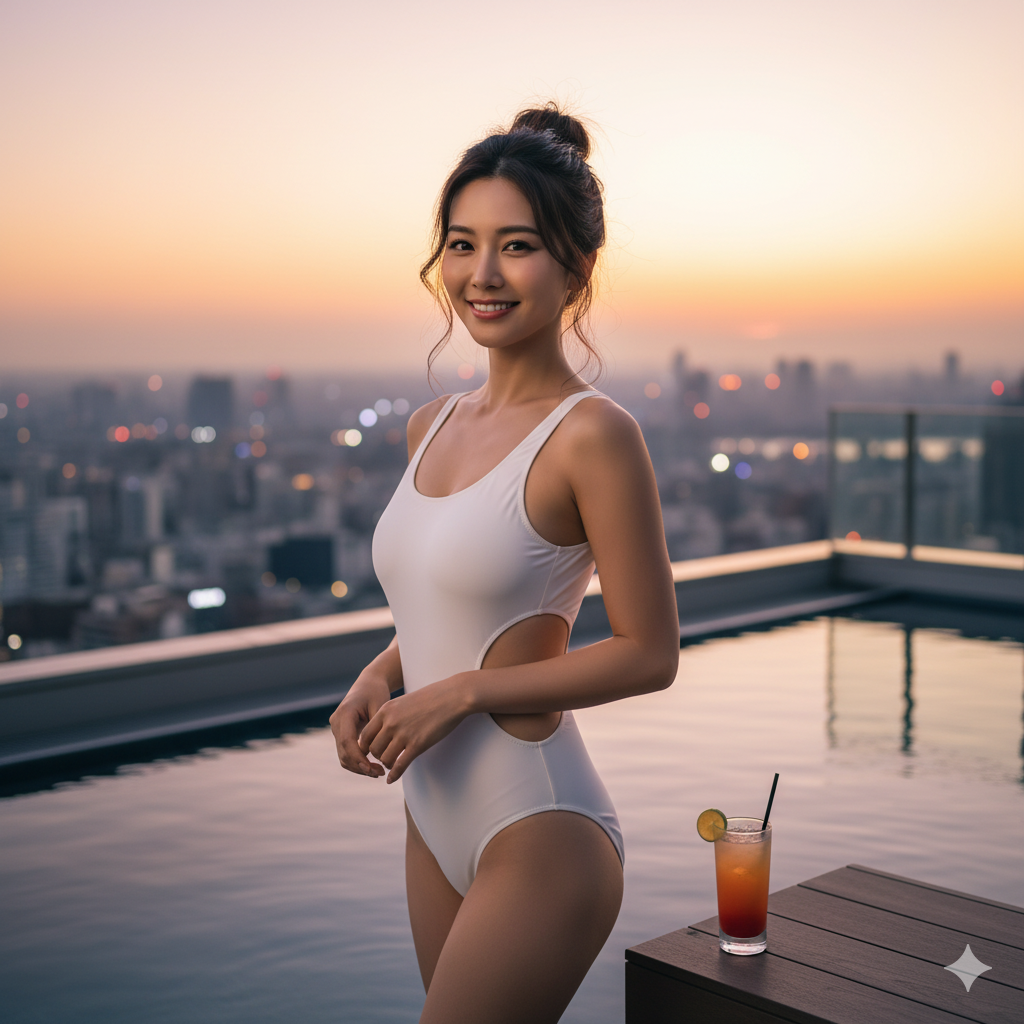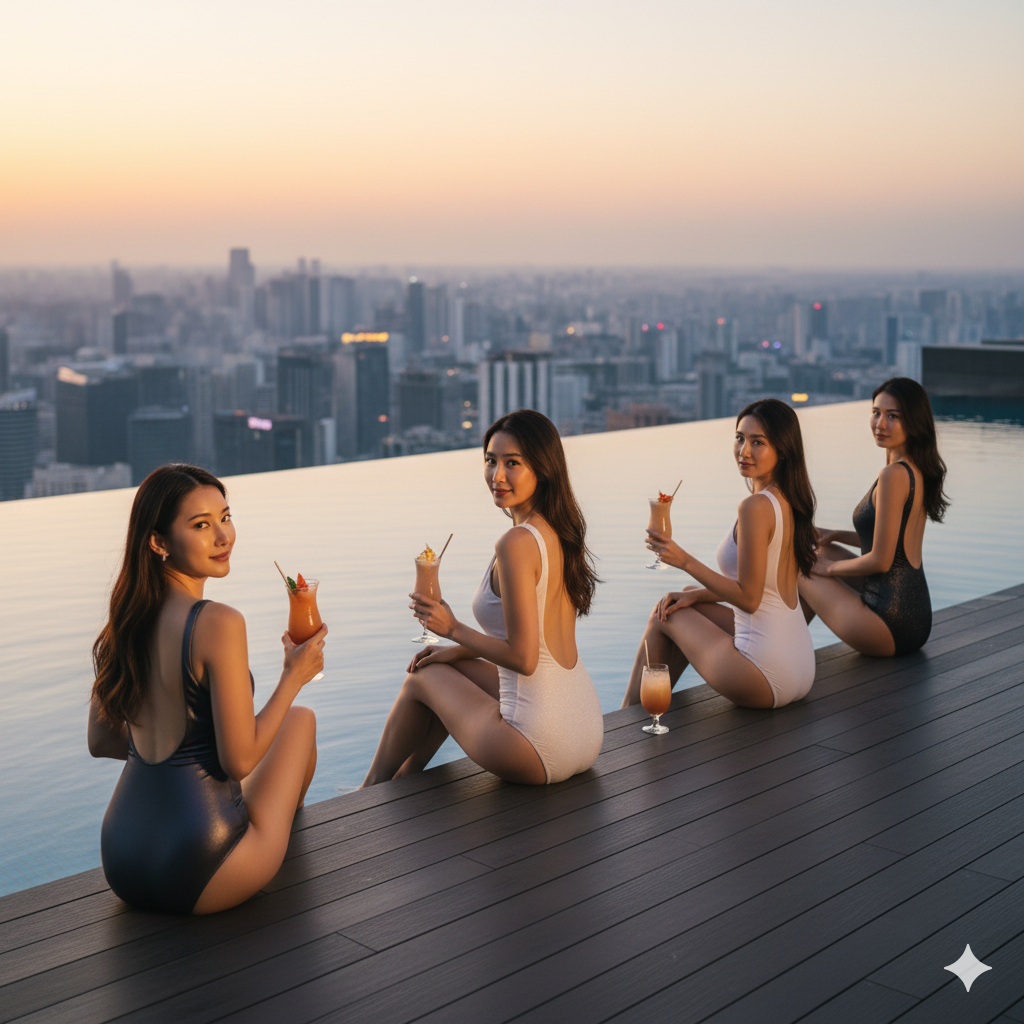Think of Japan’s image clubs as part of the city’s night infrastructure: small reception floors near major stations, themed rooms upstairs, and a tightly managed flow powered by timers and scripts. The “image” in image club refers to role and setting—uniforms, props, and short scenes—rather than open-ended intimacy. As with other regulated categories, these venues sit within the Act on Control and Improvement of Amusement Businesses, and local police publish category definitions and procedures (see 警視庁:業種一覧 and the national overview PDF: 警察庁:風営適正化法の概要(PDF)). We treat image club japan as urban culture—organized spaces of scripted contact—so you can navigate respectfully and confidently.
Contents
1. What exactly is an image club and how does it fit Japanese regulations?
2. Where are the main areas in Tokyo and how do you access them?
3. What do prices, time, and eligibility look like for first-timers?
4. What venue formats exist and what services do they standardize?
5. How to reserve, behave, and communicate—practical traveler etiquette
1. What exactly is an image club and how does it fit Japanese regulations?

1-1 Category overview (law & local practice)
Conclusion → Numbers → Source: Image clubs operate as standardized, time-boxed services. Expect 30–60 minutes base courses with clear add-ons and reception-level explanations. Regulatory baselines and business categories are outlined on police sites (Tokyo Metropolitan Police “business list” and the NPA overview PDF): 警視庁(業種一覧), 警察庁(PDF).
1-2 How sessions are staged
Reception checks ID, states the “course time,” collects payment, and assigns a themed room or booth. Staff follow preset scripts that emphasize consent, hygiene, and timing. You’ll see clocks or buzzers to mark extensions and endings. The emphasis is on the performance of a role (costume, set, dialogue) rather than unscripted intimacy.
1-3 What to bring and what to expect
Bring cash, a passport/residence card, and arrive early. Many venues are on upper floors; signage is discreet. Use official district portals and railway pages for routing and last trains—e.g., Kabukichō Official, JR新宿駅, JR池袋駅, 東京メトロ渋谷駅.
2. Where are the main areas in Tokyo and how do you access them?

2-1 Kabukichō (Shinjuku)
Conclusion → Numbers → Source: From JR Shinjuku east exits, the core streets of Kabukichō are ~8–12 minutes on foot. Use JR’s official station page for maps and facilities, then check the district portal for street-level info and events: JR新宿駅(構内図), 歌舞伎町公式.
2-2 Ikebukuro (Toshima City)
Conclusion → Numbers → Source: Ikebukuro’s nightlife is tightly clustered around East/West exits; many venues are 3–10 minutes from the gates. Confirm exits and elevator locations via JR’s official page, and note that Toshima Ward runs tourist help desks: JR池袋駅(構内図), 豊島区:池袋東口観光案内所, 豊島区観光協会.
2-3 Shibuya (multi-line access)
Conclusion → Numbers → Source: Shibuya’s station complex is large; allow 10–15 minutes to navigate between exits. Check the Tokyo Metro page (Ginza, Hanzōmon, Fukutoshin lines) and Tokyu for the Tōyoko/Den-en-toshi lines: 東京メトロ渋谷駅, 東急:渋谷駅.
Table 1: Venue Types & Base Fees (Tokyo first-timer view)
| Venue Type | Typical Fee (JPY) | Session Time | Area (JP Link) |
|---|---|---|---|
| Image club (role-play booth/room) | ¥8,000–¥18,000 (entry courses) | 30–60 min | Kabukichō Official |
| Costume lounge (seated, short scenes) | ¥6,000–¥12,000 | 30–45 min | JR Ikebukuro (access) |
| Out-call role-play (hotel-based) | ¥10,000–¥22,000 (+hotel) | 60–90 min | Tokyo Metro Shibuya |
Ranges are indicative; many venues publish their own menus. Use district and railway pages to plan exits, walking time and last trains (e.g., Kabukichō, JR Shinjuku, JR Ikebukuro, Tokyo Metro Shibuya).
Table 2: Access & Hours (district & stations)
| Station | Walk Time | Typical Venue Hours | Area (JP Link) |
|---|---|---|---|
| JR Shinjuku (East exits) | 8–12 min to Kabukichō core | Evening–late (varies by shop) | Kabukichō Official / JR Shinjuku |
| JR Ikebukuro (East/West) | 3–10 min to clusters | Daytime–late evening | JR Ikebukuro / Toshima Tourism |
| Tokyo Metro / Tokyu Shibuya | 10–15 min across complex | Evening–late (varies) | Tokyo Metro Shibuya / Tokyu Shibuya |
Hours are shaped by national law and local ordinances. For categories and definitions, refer to police pages: 警視庁(業種一覧), 警察庁(PDF).
3. What do prices, time, and eligibility look like for first-timers?

3-1 Reading posted prices (course & add-ons)
Menus usually show course time (the timer), base fee, and optional add-ons (e.g., costume changes). The clock starts at room entry; extensions are subject to availability. District and railway portals help you align sessions with last trains and ATM access: Kabukichō, JR池袋, メトロ渋谷.
3-2 Eligibility and ID
Conclusion → Numbers → Source: Venues enforce age thresholds—typically 18+—and request a passport or residence card at reception. For category definitions and procedures, see Tokyo Metropolitan Police (business list) and the NPA overview: 警視庁, 警察庁PDF.
3-3 Payment, extensions, cancellations
Payment is typically up front; cash is common, cards vary. Extensions are often 15–30 minutes at posted rates. Late arrivals may shorten time without refund. Use official station pages for route times and barrier-free paths so you arrive on schedule: JR新宿, JR池袋, メトロ渋谷.
Table 3: Reservation & Eligibility (what reception checks)
| Method | Lead Time | Eligibility | Official (JP Link) |
|---|---|---|---|
| Walk-in (reception desk) | Same-day when open slots exist | Adult 18+, ID required; Japanese language often preferred | Kabukichō portal |
| Phone/Web booking (shop site) | 3–24 hours ahead is typical | Name/number; late arrival may shorten time | 警視庁(カテゴリ) |
| Intermediary (English support) | Same-day to 48 hours | Passport required; local rules apply | 警察庁(PDF) |
Age thresholds and operating categories are defined by law and ordinances. Verify category basics on police pages before booking.
4. What venue formats exist and what services do they standardize?

4-1 Seated “costume lounge” (short scenes)
Front-of-house reception → booth seating → short, themed interaction. Staff follow clear boundaries defined by house rules. Conclusion → Numbers → Source: Entry courses often sit around ¥6,000–¥12,000 for 30–45 minutes. For routing and last trains, rely on station pages and district portals: JR新宿, 歌舞伎町.
4-2 Private role-play rooms
Reception assigns a themed room (e.g., “clinic,” “office,” “classroom”—the set is the product). The session centers on costuming and scripted dialogue within the allocated time. Conclusion → Numbers → Source: Expect 60-minute bases from roughly ¥10,000–¥18,000, extensions in 15–30 minutes. Category context: 警視庁(業種一覧).
4-3 Hotel-based role-play (out-call)
Advance phone/web booking; staff meet at your accommodation, verify identity, and keep to a scripted scene. Conclusion → Numbers → Source: Commonly 60–90 minutes, base fees ¥10,000–¥22,000 (+hotel). Plan hotel location and returns using official railway pages (メトロ渋谷, JR池袋).
Table 4: Useful Phrases (Quick Reference)
| English | Japanese (polite) | When to use | Reference (JP) |
|---|---|---|---|
| Do you accept reservations? | 予約は可能ですか?(Yoyaku wa kanō desu ka?) | Phone/Web inquiry | 警視庁(カテゴリ) |
| I will bring my passport. | パスポートを持参します。(Pasupōto o jisan shimasu.) | Eligibility confirmation | 警察庁(PDF) |
| Which exit is closest? | 最寄りの出口はどちらですか?(Moyori no deguchi wa dochira desu ka?) | At the station | JR新宿 / JR池袋 / メトロ渋谷 |
Phrases are polite register and useful at reception desks or stations. Keep requests simple and within posted menus.
5. How to reserve, behave, and communicate—practical traveler etiquette

5-1 Booking steps that match local practice
Conclusion → Numbers → Source: Same-day phone slots are common; web forms may close 3–12 hours before session start. If you’re not confident in Japanese, an intermediary helps. For routing, rely on official station pages (e.g., JR新宿, JR池袋, メトロ渋谷).
5-2 Etiquette on site
Phones on silent, no photography, and respect for the script. Requests are polite and within posted menus; staff will state what is possible. Cancellations inside 1–3 hours may incur a fee. If you are lost, call reception from a quiet spot near the building entrance and describe your landmark.
5-3 Quick phrases for smooth sessions
- “I booked for 9 p.m.” → 「21時で予約しています。」
- “Is card payment available?” → 「カードは使えますか?」 (Carry ¥15,000–¥30,000 cash as a buffer.)
- “Where is the nearest taxi stand?” → 「一番近いタクシー乗り場はどこですか?」
For neighborhood notices and events (which influence crowds), see the district portal: 歌舞伎町公式. For Ikebukuro traveler assistance, check 池袋東口観光案内所.
6. Summary and Next Steps

Related internal guides on SoapEmpire:
- Tokyo Red-Light District: First-timer’s Map
- How to Book: Phone Scripts & Line Etiquette
- Osaka Soapland Guide (formats & access)
- Yoshiwara Step-by-Step Access
Key official resources (first-party):
- Tokyo Metropolitan Police (business list): 警視庁:風俗営業等業種一覧
- National Police Agency overview (PDF): 警察庁:風営適正化法の概要
- Kabukichō shopping-street portal: 歌舞伎町オフィシャル
- JR Shinjuku Station: 構内図・バリアフリー情報
- JR Ikebukuro Station: 構内図・バリアフリー情報
- Tokyo Metro Shibuya Station: 駅情報
- Toshima City Visitor Info (Ikebukuro): 池袋東口観光案内所
Why SoapEmpire is a smart companion for exploring image clubs in Japan
Newcomers quickly learn that image clubs—unlike casual nightlife—are highly structured. You choose a role-play theme, confirm a precise time window, and move along a short, choreographed path from reception to room and back out to the street. That reliability is a relief, but it also means small mistakes snowball: pick the wrong exit and you lose ten minutes; misread a menu and you overpay; call too late and the last train becomes a taxi. For travelers and expats balancing work, dinners, and sightseeing, a simple, trustworthy process matters more than hype.
SoapEmpire turns ambiguity into clarity. We map core districts—Kabukichō, Ikebukuro, Shibuya—against official station pages and district portals, so your route, walking time, and buffer are realistic. Our editors write in plain English and treat image clubs as part of the urban fabric, not as taboo, explaining how roles, timers, and reception scripts actually work. Because our lens is ethnographic, we focus on the “performance of intimacy”: what the set contributes, how consent is staged, and where the boundaries sit. We translate this into practical steps—what to say on the phone, how much cash to carry, when to arrive, and how extensions are offered.
If language is a concern, SoapEmpire offers 24-hour booking support for $10. You send a store name, a time window, and a nickname; we place the call, confirm the slot, and relay the details. If your first choice is full, we suggest realistic alternates within the same area and time frame. Our goal is to minimize friction while keeping you within the rules and etiquette that venues expect. Whether you’re comparing formats or planning a one-night experience, our guidance keeps things respectful, predictable, and safe.
Ready to turn research into a smooth plan? Browse our area pages, pick a time that fits your evening, and let us handle the calls. Explore more at SoapEmpire. For reservations or inquiries, please contact us via the inquiry form.
Explore more on our official site: https://soapempire.com/
FAQ (Quick)
- Q1. What’s a realistic first-timer budget for an image club?
- Plan ¥15,000–¥30,000 including base course, a small extension, and transport. Time-box your visit against last trains using JR/Metro pages: JR新宿, JR池袋, メトロ渋谷.
- Q2. How do I book without Japanese?
- Use simple phrases (see Table 4) and call earlier in the day. Many shops confirm by phone; aim for 3–24 hours ahead. If uncertain, use an intermediary. See police pages for category context: 警視庁.
- Q3. Are there age or ID requirements?
- Yes—adults (18+) with valid ID. Reception may record your first name and birthdate. Category basics are on 警視庁(業種一覧) and 警察庁PDF.
- Q4. Where should I go first in Tokyo?
- Kabukichō (Shinjuku), Ikebukuro, or Shibuya—each has dense options and official access pages. Expect 3–15 minutes walks from exits: 歌舞伎町, JR池袋, メトロ渋谷.
If you’re interested in visiting any of these places, SoapEmpire offers a 24-hour booking support service for only $10.
Just send the store name, preferred time, and your name (nickname is fine) to:
artistatakuma@icloud.com.
We’ll take care of your reservation quickly and smoothly.